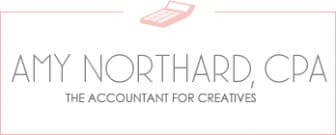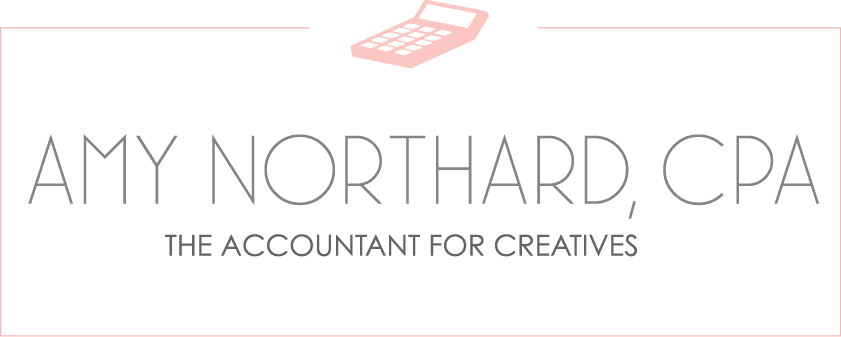As an accountant who works with small business owners, I know how much tax liability can impact the lives of our clients.
In fact, the question I hear the most is: “How can I pay less in taxes?” This is why we spend so much time educating ourselves and our clients about the steps we can take to legally reduce taxes owed.
Unfortunately, the IRS does not automatically provide these suggestions when we file our taxes, so it’s important for us to be proactive about reducing our tax liabilities. For this reason, I have created this easy list for all of us to use at the end of the year (I’m in this boat too, you know!). In this list, you’ll find simple, smart, and legal actions you can take right now to ensure that you’ll pay less in taxes. Plus, I’ll also tell you what not to do.
Tax saving strategies we’ll review include:
1.) Contribute to Your Retirement
As a small business owner, there are three main options for you to consider when it comes to deciding on a retirement plan. Use the chart below to help you decide what’s best for your business. Not only will you be saving for retirement, you will be reducing your tax liability, and you may also qualify for the Saver’s Credit. Win-win-win!
| Type | Details |
|---|---|
| SEP IRA | |
| For business owners with a workplace of less than 100 employees who want to make tax-deductible contributions for yourself and all of your employees. The business owner is the only one who can contribute to this account. | The IRS sets limits based upon your income and whether other retirement plans are available to you and/or your spouse. |
| SIMPLE IRA | |
| For business owners of any size company who want to make tax-deductible contributions for yourself and one or more employees. The business owner and the employees can contribute to this account. | The IRS sets limits based upon your income and whether other retirement plans are available to you and/or your spouse. |
| 401(k) | |
| For business owners who want to make tax-deductible contributions for yourself only. | For 2019, you can place up to $19,000 per year into a 401(k). If you’re 50 or older, you can contribute up to $25,000. |
2.) Contribute to a Health Savings Account (HSA)
This may not be the sexiest of options, but if you’ve ever experienced unplanned medical bills, you know how important it is to have an emergency fund dedicated solely to medical expenses.
If you have a high-deductible medical plan, you may have the option to contribute to an HSA. The unused contributions can roll over indefinitely and grow tax-free. And, if you use the money for qualified medical expenses, then you’ll never have to pay taxes on that money.
For 2019, you can contribute up to $3,500 for self-only high-deductible coverage and up to $7,000 for family high-deductible coverage. Pretend your salary is $35,000 in 2019 and you’re in the 22% tax bracket. If you contribute $3,500 to an HSA, then you would pay $759 less on your taxes for 2019.
3.) Further Your Education
The best business owners are lifelong learners. If you took time throughout the year to learn a new skill, you may be eligible for the American Opportunity Tax Credit (AOTC) or the Lifetime Learning Credit (LLC). Unfortunately, you cannot take both credits for yourself in the same year.
The AOTC is more restrictive as it is only for those in undergraduate coursework. However, if that’s you, you can claim $2,000 spent towards tuition, books, equipment, and school fees, plus another 25% of the next $2,000 you may have spent on those same items. That would give you up to $2,500 back in your pocket.
The LLC is less restrictive in that it counts for undergraduate, graduate, or non-traditional learning. For this one, you can claim 20% of the first $10,000 you paid for the year for educational expenses (not living expenses or transportation) to improve your job skills, but the maximum you’ll get to claim is $2,000.
For both of these education credits, an eligible educational institution is any college, university, vocational school, or other postsecondary educational institution eligible to participate in a student aid program administered by the U.S. Department of Education.
4.) Invest in Your Children’s Education
When you place money into a 529 plan for your children’s future educational expenses, it can grow federal tax-free and won’t be taxed again when you use the money for education. These plans are offered by states. Almost every state has one, and over 30 states offer a full or partial tax deduction or credit for contributions to a 529 plan.
For instance, in my state of Indiana, I can earn a $1,000 tax credit when I contribute $5,000 this year to my son’s 529 plan.
5.) Give to Charity
If you have kept track of your donation receipts and you are able to itemize your taxes, then giving to charity is something you can continue to do at the end of the year to reduce your taxable income. Not just cash donations, but also donations of clothing, furniture, and other household items are included in this deduction. Just don’t forget to ask for a tax receipt when you donate.
6.) Deduct Your Home Office
If your principal place of business is in your home, then don’t be afraid to take the Home Office Deduction. There are two ways to calculate this deduction, so you should speak with your tax professional to see which way will secure you the most money back on your taxes.
7.) Go to the Doctor
Well, you should be doing this on a regular basis anyway. However, why this might be an especially good idea at the end of the year depends on whether or not you’ll be able to itemize and whether or not you’re close to the medical expense threshold.
If the total of your unreimbursed medical bills is close to exceeding 10% of your adjusted gross income (in 2019) for the year, then you may as well get to that number so that you can deduct those bills from your taxable income.
Additionally, you might be surprised about some bills such as transportation and weight-loss programs that the IRS may accept in this total! Definitely check out the list on the IRS’ website to see what you have paid for this year that may qualify for this deduction.
8.) Hold Off On Billings
If there is any reason to suspect that you might make less money next year than this year, then you may want to hold off on sending out invoices to clients until January 1 rolls around. In this way, you can reduce your taxable income for this year and still get paid for your work next year.
9.) Review the Ultimate List of Deductions
There are lots of deductions available to you as a small business owner. However, it is very hard to keep track of them all, and if you wait until taxes are due, the short timeline may keep you from having all of your ducks in a row.
To avoid this problem, I have created the ultimate guide of tax deductions for small business owners. Take some time now to look through this list and get everything together that you will need in order to claim these deductions. Cha-ching!
10.) Get Professional Help
There is no doubt you are a smart, hard-working, industrious individual. You may even know quite a bit about taxes and feel confident doing your own taxes using software to help you catch deductions and credits. However, if you have any questions about some more advanced tax savings strategies like tax-loss harvesting, or you have questions about your tax credits and deductions, then you really should consider hiring a Certified Public Accountant (CPA) for tax time. If you haven’t worked with a CPA in the past, now is the right time to find one you like. If you wait too long, many may no longer be taking new clients until after the tax season ends.
Alright, now that we’ve covered what you can do right now to lower the money you owe the government, let me fill you in on what you should not do.
Expenses Are Not the Answer
Every so often a client will ask me if they should make a big purchase (buy a new camera, subscribe to a new online course, buy the new fancy tool) at the end of the year so that they don’t have to pay taxes. I always answer this question with one of my own: Do you need this item to succeed and grow your business, or are you trying to avoid paying taxes on your income?
Making big purchases at the end of the year is not a good way to avoid taxes and not a smart way to run a successful business. Instead, use the tips I’ve provided in this list to help lower your taxable income and keep your hard-earned money in your bank account.

